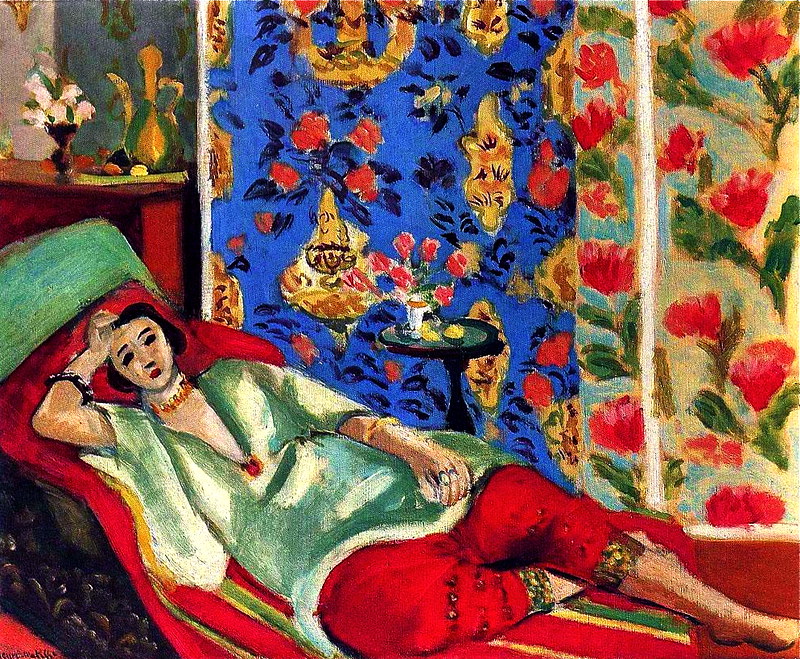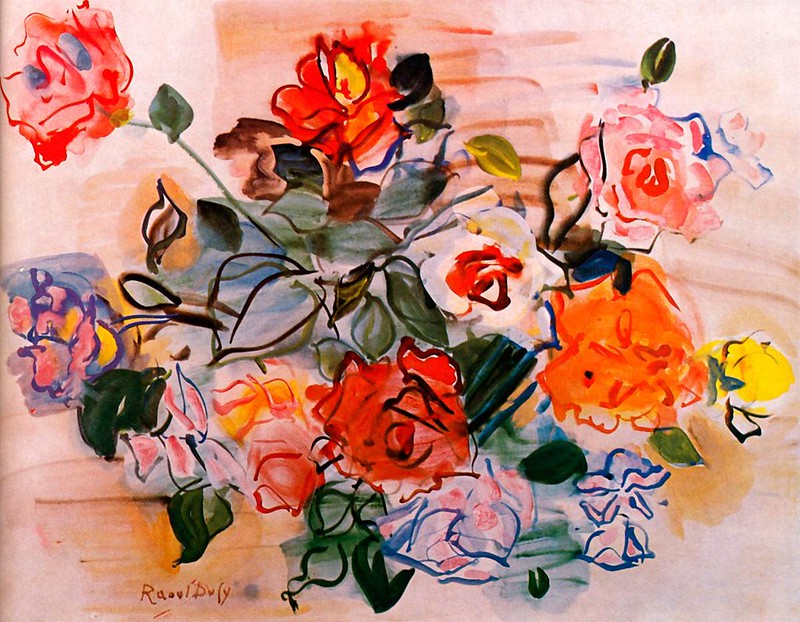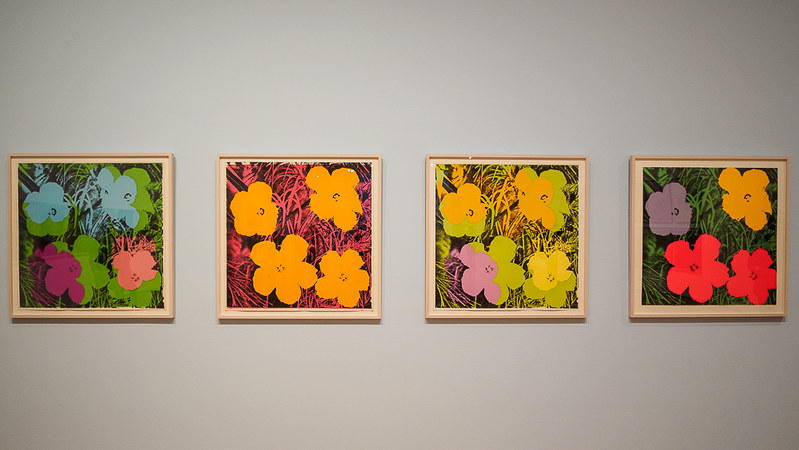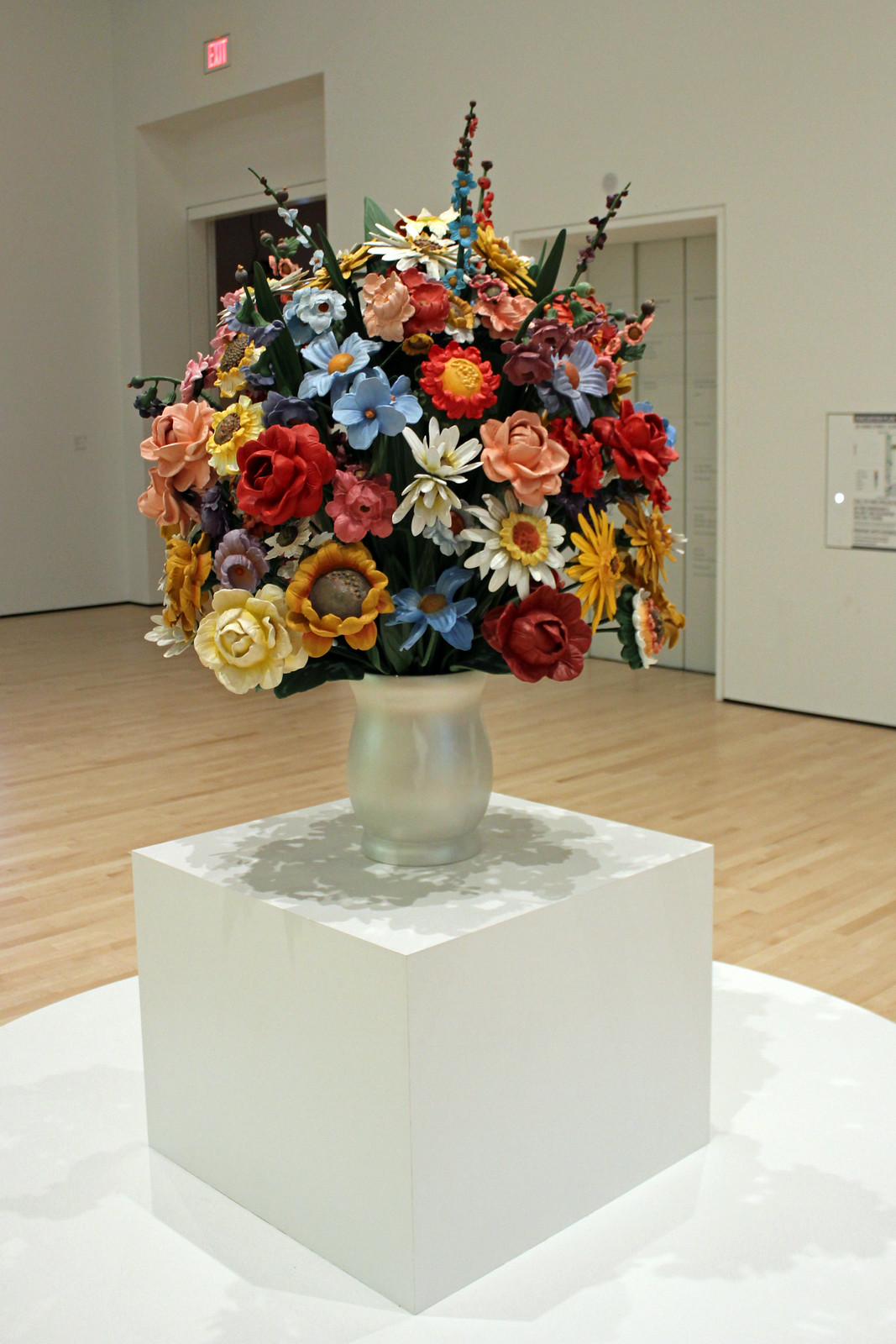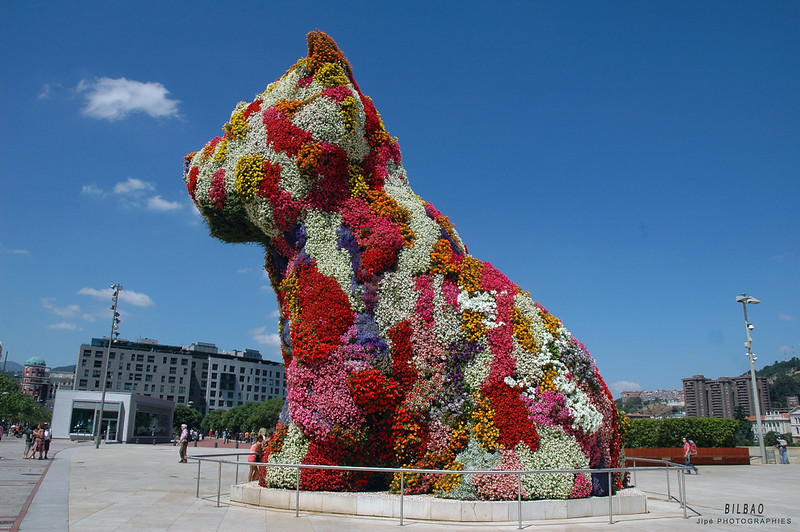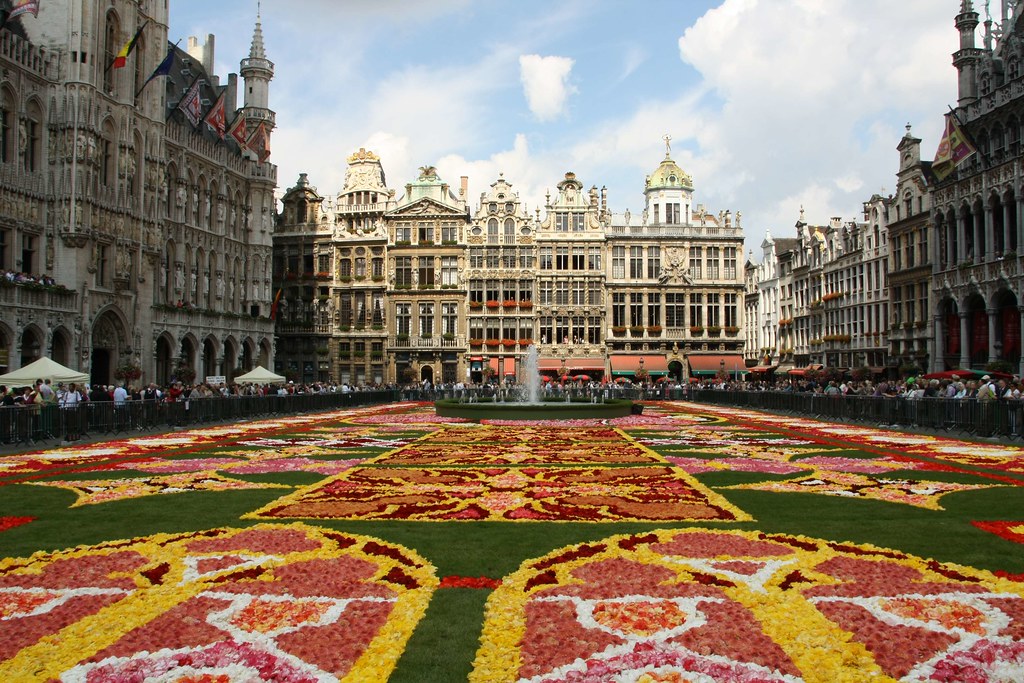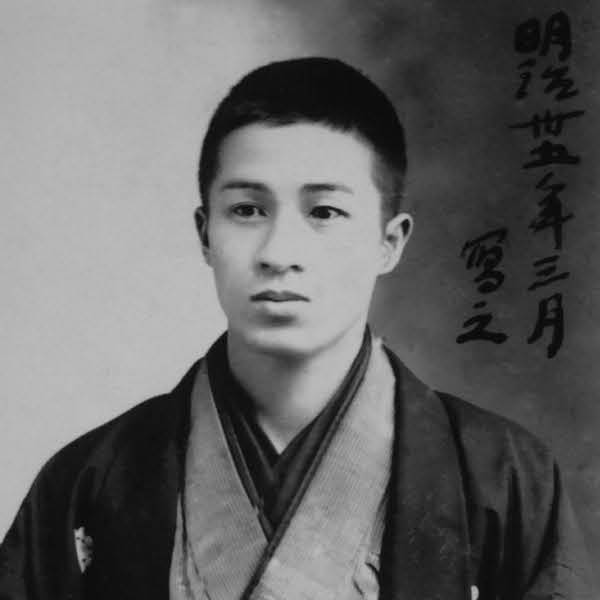Impressionism
During the Impressionist movement, French painters employed floral subject matter in several ways. Often, a beautifully arranged bouquet is featured as a subject of an indoor scene. Unlike still-life paintings, these pieces frequently include figures, too.
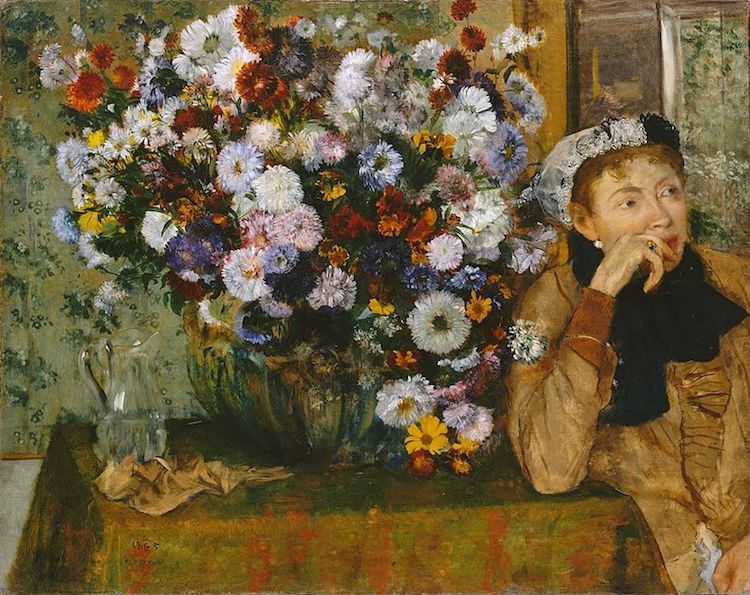
Edgar Degas, ‘A Woman Seated beside a Vase of Flowers' (1865) Photo: Met Museum (Public Domain)
In other paintings, blooms set the scene and serve as a backdrop. As many Impressionist artists opted to work en plein air (“outdoors”), flowers, plants, and other elements of nature often compose the background of their paintings.
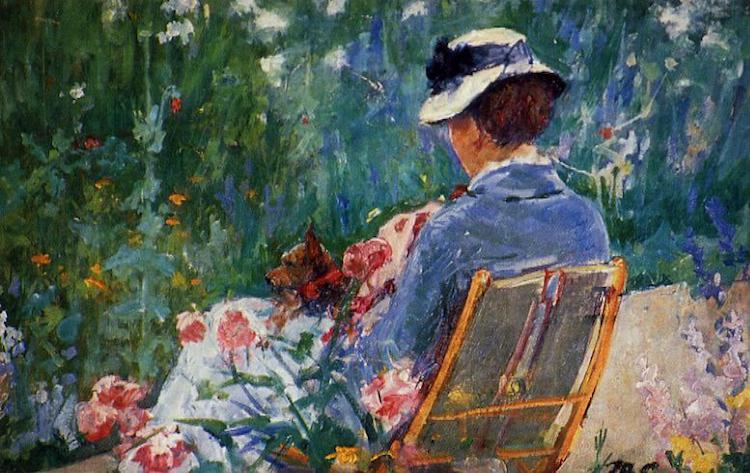
Mary Cassatt, ‘Lydia Seated in the Garden with a Dog in Her Lap' (ca. 1880) Photo: Wiki Art (Public Domain)
In some cases, like Monet's iconic Water Lilies series, the flowering plants are the focal point of the painting. Given the prominence of the lilies in his paintings, it is no wonder that Monet famously explained: “It is maybe to flowers that I owe becoming a painter.”
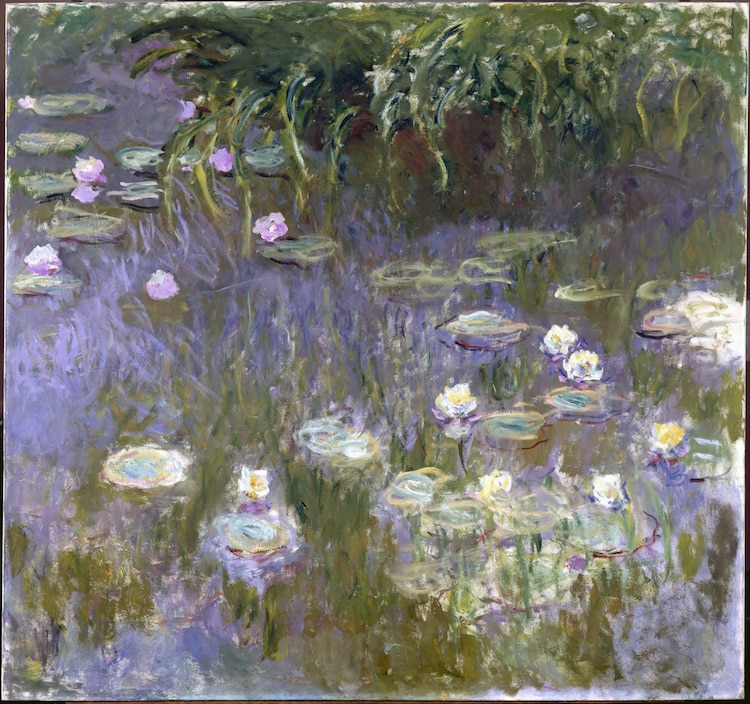
Claude Monet, ‘Water Lilies' (1922) Photo: Google Art Project via Wikimedia Commons (Public Domain)
Post-Impressionism
Throughout the Post-Impressionist period, artists continued to portray flowers in their paintings. Like Impressionist depictions, these pieces range from indoor representations, like Van Gogh‘s famous Sunflowers, to scenes set in the outdoors, like the artist's famed Irises.
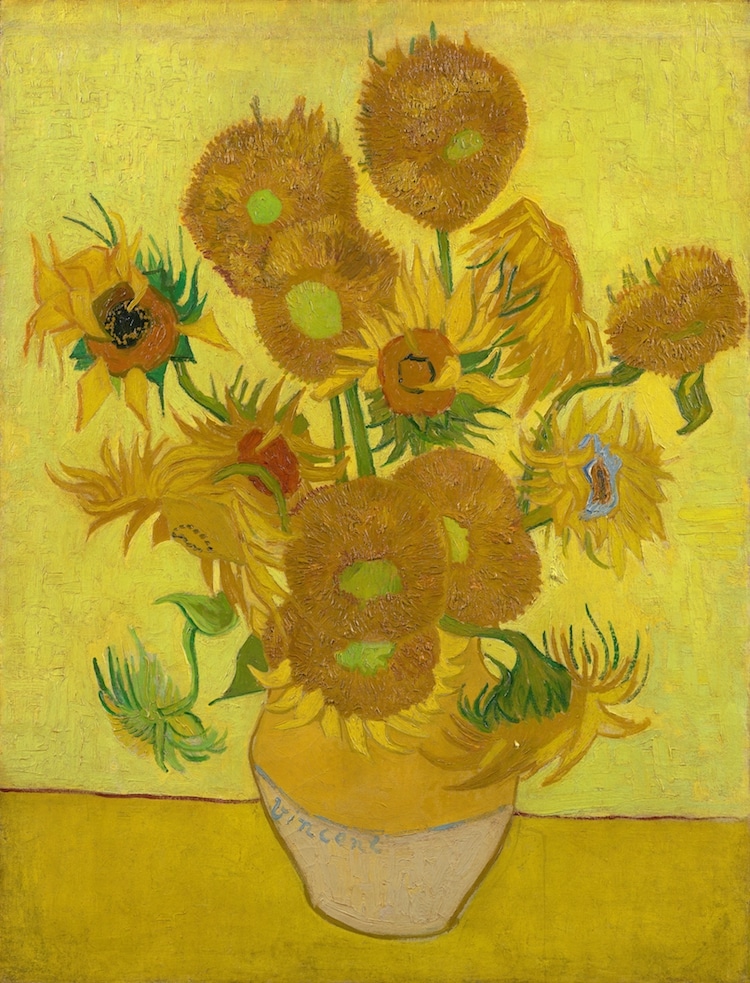
Vincent van Gogh, ‘Sunflowers' (1889) Photo: The National Gallery via Wikimedia Commons (Public Domain)

Vincent van Gogh, ‘Irises' (1889) Photo: The Getty Center via Wikimedia Commons (Public Domain)
In both cases, the blossoms and blooms often serve as the primary subject of the pieces, showcasing the Post-Impressionists' interest in rendering everyday subjects as stylized studies of brushstroke and tone.
Fauvism
Given Fauvism's emphasis on color, paintings from this period often feature vibrant flowers as decorative elements. In many of Matisse‘s iconic interiors, beautiful and busy floral designs adorn the walls. As art critic Robert Hughes explains in The Shock of the New: The Hundred-Year History of Modern Art—Its Rise, Its Dazzling Achievement, Its Fall, “Matisse loved pattern, and pattern within pattern,” making floral wallpaper the perfect accent for his indoor depictions.
Fauvists also continued the still-life tradition, producing expressive bouquets that favor color over line.
Pop Art and Neo-Pop Art
During the Pop Art movement, artists created bold pieces of art that incorporated and reimagined accessible, everyday subject matter. Flowers—both as stand-alone studies in Andy Warhol's silkscreen series and as elements of simplified still-lifes by Roy Lichtenstein—frequently “popped” up in these works.
Neo-Pop artist Jeff Koons also frequently features flowers in his contemporary art. Some, like Large Vase of Flowers, put a sculptural spin on still-life depictions from the Renaissance. Others, like Puppy, allude to ancient Egyptian art by employing real blooms and botanicals.
Contemporary Ephemeral Art
Like Jeff Koons, many contemporary artists use real flowers to produce exquisite ephemeral art. Ranging from meticulous floral arrangements to outdoor sculptures and public installations, these pieces celebrate the flowers' fleeting beauty and keep their artistic legacy alive.
Related Articles:
Ultraviolet Photography Reveals the Unexpected Fluorescence of Flowers
Japanese Artist Plants Colorful Flower Landscapes to Explore Nature’s Cycle of Life and Death
Colored Pencils Inspired by Japanese Flowers Shed “Petals” as You Sharpen Them
Why Artists Use Gold Leaf and How You Can Make Your Own Ethereal Paintings
